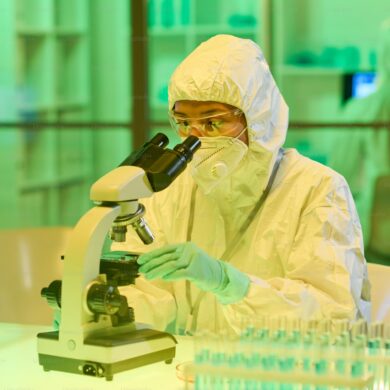The amount of time it takes to accurately diagnose a disease often factors into the survival rate. If a professional doesn’t recognize the presence of a pathogen, a patient is put at a greater risk. According to a study by The National Academy of Medicine in 2015, postmortem exams suggest diagnostic errors contribute to 10% of patient deaths in America. Additionally, harmful microorganisms found in food and water could potentially lead to an epidemic if not detected in a timely manner. Some countries may not be able to address these concerns due to fiscal constraints and limited resources. Faster and more accurate diagnosing methods are constantly being developed to circumvent these universal issues. On November 22nd, 2017, University of Queensland scientists published an article explaining their development of a “dipstick” technology that can perform DNA and RNA extraction in as little as 30 seconds on humans, animals, or plants. The versatility of this innovation will allow for better prevention of health, agricultural, and environmental issues worldwide. Essentially, it’s a faster and cheaper way to purify DNA and RNA of target subjects. DNA isolation is required for genetic analysis of organisms. Due to the novelty of this creation and the pending patent, a specific explanation on how it works isn’t available yet. But that shouldn’t undermine how impactful this tool could be. In comparison, current DNA extraction methods can take hours and require specialized equipment, such as an incubator, to lyse cells. Due to its simplicity, mass production would open up job opportunities not specified to medical practitioners. Commercial company partners could establish their own means of production and expand their workforce. The growth of the job market for non-specialists is a mutually beneficial occurrence, and often not a result of medical innovations due to their specificity. Farmers and producers would need to be instructed on how to utilize this technology to detect pathogens early on. Additionally, a program for scientists to teach individuals how to use diagnostics could be established in both the US and developing countries. For specialized professions, there could be new experts for usage in the field and interpretation of the tool in context as well as error detection. With an unprecedented tool like the “dipstick,” medically-oriented companies will need to enlarge to satisfy a rapidly growing demand. If commercially produced, there will likely be quality inspectors to ensure safety and validity.
These job opportunities highlight the benefits of minimalism, functionality, and broad range. The growing job market to accommodate this tool isn’t intended to be limited to America. If production capabilities were offered to developing countries, then there would be a means and incentive to focus on medicinal development. The same economic benefits would be available as well, and the classic notion of revenue and reduced unemployment would be an outcome. Introduction of jobs related to the tool might inspire more people to enter the medical development field and strengthen bridges, but reduce reliance, between first world and developing countries. A modest diagnostic stick has the potential to create a variety of occupations and improve overall health quality in numerous countries by preventing epidemics and saving countless lives through apt diagnosis.
